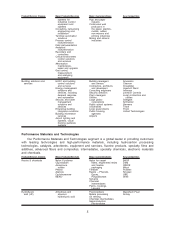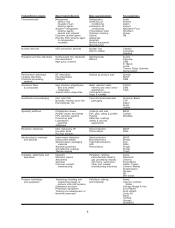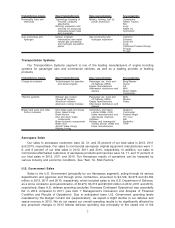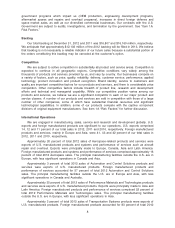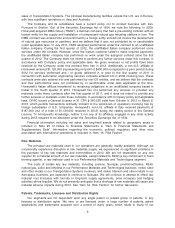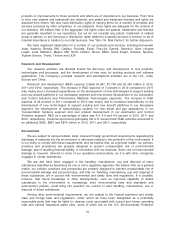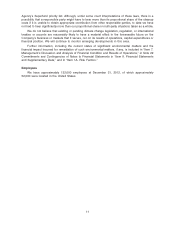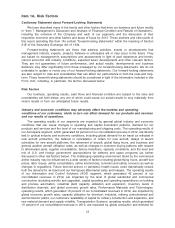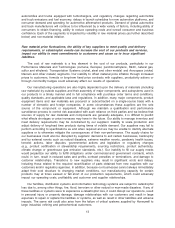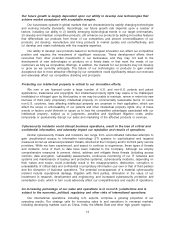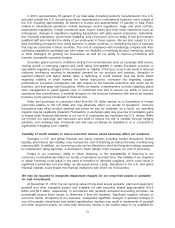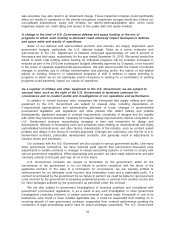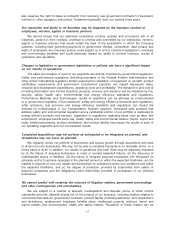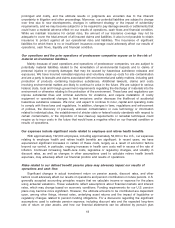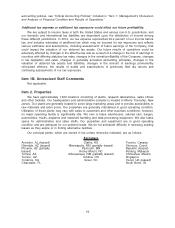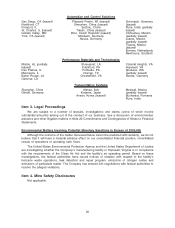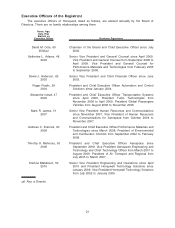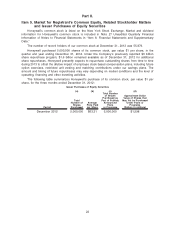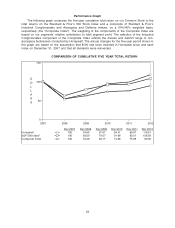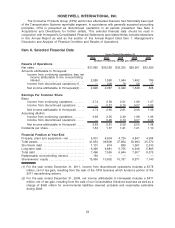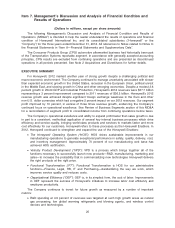Honeywell 2012 Annual Report Download - page 24
Download and view the complete annual report
Please find page 24 of the 2012 Honeywell annual report below. You can navigate through the pages in the report by either clicking on the pages listed below, or by using the keyword search tool below to find specific information within the annual report.In 2012, approximately 55 percent of our total sales (including products manufactured in the U.S.
and sold outside the U.S. as well as products manufactured in international locations) were outside of
the U.S. including approximately 28 percent in Europe and approximately 13 percent in Asia. Risks
related to international operations include exchange control regulations, wage and price controls,
employment regulations, foreign investment laws, import, export and other trade restrictions (such as
embargoes), changes in regulations regarding transactions with state-owned enterprises, nationaliza-
tion of private enterprises, government instability, acts of terrorism, and our ability to hire and maintain
qualified staff and maintain the safety of our employees in these regions. We are also subject to U.S.
laws prohibiting companies from doing business in certain countries, or restricting the type of business
that may be conducted in these countries. The cost of compliance with increasingly complex and often
conflicting regulations worldwide can also impair our flexibility in modifying product, marketing, pricing
or other strategies for growing our businesses, as well as our ability to improve productivity and
maintain acceptable operating margins.
Uncertain global economic conditions arising from circumstances such as sovereign debt issues,
slowing growth in emerging regions and credit rating downgrades in certain European countries or
speculation regarding changes to the composition or viability of the Euro zone could result in reduced
customer confidence resulting in decreased demand for our products and services, disruption in
payment patterns and higher default rates, a tightening of credit markets (see risk factor below
regarding volatility of credit markets for further discussion), increased risk regarding supplier
performance, increased counterparty risk with respect to the financial institutions with which we do
business, and exchange rate fluctuations. While we employ comprehensive controls regarding global
cash management to guard against cash or investment loss and to ensure our ability to fund our
operations and commitments, a material disruption to the financial institutions with whom we transact
business could expose Honeywell to financial loss.
Sales and purchases in currencies other than the US dollar expose us to fluctuations in foreign
currencies relative to the US dollar and may adversely affect our results of operations. Currency
fluctuations may affect product demand and prices we pay for materials, as a result, our operating
margins may be negatively impacted. Fluctuations in exchange rates may give rise to translation gains
or losses when financial statements of our non-U.S. businesses are translated into U.S. dollars. While
we monitor our exchange rate exposures and seek to reduce the risk of volatility through hedging
activities, such activities bear a financial cost and may not always be available to us or successful in
significantly mitigating such volatility.
Volatility of credit markets or macro-economic factors could adversely affect our business.
Changes in U.S. and global financial and equity markets, including market disruptions, limited
liquidity, and interest rate volatility, may increase the cost of financing as well as the risks of refinancing
maturing debt. In addition, our borrowing costs can be affected by short and long-term ratings assigned
by independent rating agencies. A decrease in these ratings could increase our cost of borrowing.
Delays in our customers’ ability to obtain financing, or the unavailability of financing to our
customers, could adversely affect our results of operations and cash flow. The inability of our suppliers
to obtain financing could result in the need to transition to alternate suppliers, which could result in
significant incremental cost and delay, as discussed above. Lastly, disruptions in the U.S. and global
financial markets could impact the financial institutions with which we do business.
We may be required to recognize impairment charges for our long-lived assets or available
for sale investments.
At December 31, 2012, the net carrying value of long-lived assets (property, plant and equipment,
goodwill and other intangible assets) and available for sale securities totaled approximately $19.9
billion and $0.5 billion, respectively. In accordance with generally accepted accounting principles, we
periodically assess these assets to determine if they are impaired. Significant negative industry or
economic trends, disruptions to our business, unexpected significant changes or planned changes in
use of the assets, divestitures and market capitalization declines may result in impairments to goodwill
and other long-lived assets. An other than temporary decline in the market value of our available for
15


